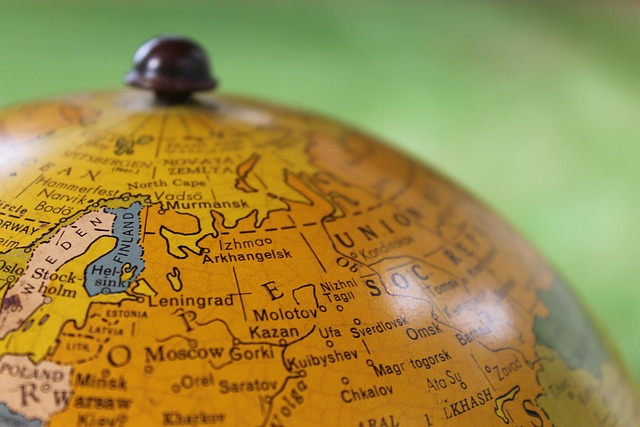
The “No-Plan” Travel Method: How to Embrace Chaos and Still Have a Great Trip
Spontaneous travel planning offers a unique way to experience the world without the stress of rigid schedules. Instead of sticking to detailed itineraries, travelers allow flexibility, curiosity, and chance encounters to shape their journey. This approach encourages creativity, openness, and a sense of adventure that structured planning often limits.
While spontaneous travel planning might seem risky to some, it can lead to unforgettable experiences, hidden gems, and personal growth. Letting go of control and embracing the unexpected can make travel more immersive and memorable.
How to Start With Spontaneous Travel Planning
The first step in spontaneous travel planning is setting a basic framework. Decide on your destination, budget, and approximate trip length. This provides a loose structure without dictating daily activities.
For example, you might choose to explore Thailand for two weeks but leave the cities, routes, and accommodations open to discovery. This balance of structure and freedom is key to successful spontaneous travel planning.
Benefits of Traveling Without a Set Plan
Spontaneous travel planning offers numerous benefits. Travelers experience less stress from schedules, have the opportunity to explore unique locations, and can adjust plans based on mood, weather, or new recommendations.
Many travelers report that spontaneous travel planning encourages flexibility and mindfulness. Without rigid plans, you notice more details, connect with locals, and discover unexpected adventures.
Finding Accommodations on the Fly
Part of spontaneous travel planning involves booking accommodations last minute. Apps and online platforms make this easier than ever. Many travelers enjoy the thrill of finding boutique hotels, hostels, or guesthouses just hours before arrival.
For first-time explorers, resources like Travel Checklist for 2025: What to Pack and Plan can help ensure you have essential items, even when lodging is unplanned. Proper preparation makes spontaneous travel planning smoother and more enjoyable.
Embracing Local Recommendations
Spontaneous travel planning thrives on local knowledge. Asking locals for restaurant tips, sightseeing ideas, or hidden attractions creates more authentic experiences than relying solely on guidebooks.
This approach encourages social interaction and cultural immersion. For example, chatting with a local in Italy might lead to a private vineyard tour or a small-town festival that wouldn’t appear in standard itineraries. Incorporating these recommendations is a hallmark of successful spontaneous travel planning.
Managing Transportation
Transportation in spontaneous travel planning requires flexibility. Booking last-minute trains, buses, or flights can be easier than it seems, especially in well-connected regions.
Car rentals, scooters, or bicycle rentals can add freedom, allowing you to adjust your route and explore off-the-beaten-path locations. Being adaptable and patient ensures smooth travel, even without prearranged transport.
Budgeting for Spontaneous Travel
Even without strict plans, budgeting is essential for successful spontaneous travel planning. Setting aside funds for accommodation, meals, transportation, and activities ensures freedom without financial stress.
Many travelers using spontaneous travel planning keep emergency funds for unexpected opportunities, such as guided tours or local experiences. This flexibility makes spontaneous travel both exciting and safe.
Advantages for Adventure Seekers
Adventure travelers thrive with spontaneous travel planning. Without a fixed itinerary, you can respond to weather changes, seasonal events, or last-minute recommendations. This approach often leads to experiences that planned trips cannot replicate.
For example, a sudden recommendation from a fellow traveler might lead you to a secluded beach, a mountain hike, or a cultural workshop. Spontaneous travel planning allows you to seize these opportunities without delay.
Mindset for Spontaneous Travel
Spontaneous travel planning requires an open mind and a willingness to embrace uncertainty. Expect delays, changes, or unexpected challenges, but view them as part of the adventure.
This mindset reduces stress, fosters resilience, and encourages travelers to fully enjoy each moment. Learning to let go of control and trust the journey is central to spontaneous travel planning.
Balancing Spontaneity With Safety
While spontaneous travel planning emphasizes freedom, safety remains important. Always share your itinerary with a trusted contact, carry emergency information, and stay aware of local conditions.
Selecting safe neighborhoods and researching general travel advisories ensures that spontaneous travel planning is both exciting and secure. Combining adventure with awareness is key to a positive experience.
Incorporating Technology Smartly
Technology can enhance spontaneous travel planning without diminishing the experience. Mobile apps for accommodations, maps, language translation, and transportation make last-minute adjustments easier.
Balancing digital tools with offline exploration allows you to enjoy spontaneous travel planning while remaining informed and safe. For tips on efficient planning and maximizing experiences, see Travel Itinerary Planning Tips to Make the Most.
Capturing the Unexpected
Spontaneous travel planning often leads to photo-worthy moments and unique memories. You might stumble upon a hidden festival, an unlisted viewpoint, or a local gathering that adds depth to your journey.
Documenting these experiences through journals, photos, or video enhances the value of spontaneous travel planning. These unplanned moments often become the most treasured travel memories.
Making Spontaneous Travel Work for You
To succeed with spontaneous travel planning, embrace adaptability, stay organized with essentials, and maintain a positive mindset. Being open to surprises and willing to change plans allows for maximum enjoyment.
This method transforms travel from a checklist of sites into a dynamic experience shaped by discovery and curiosity. Spontaneous travel planning challenges conventional travel routines and encourages more mindful and immersive exploration.
Why Spontaneous Travel Planning Is Worth Trying
Spontaneous travel planning is ideal for travelers seeking freedom, adventure, and cultural immersion. By stepping away from rigid itineraries, you allow yourself to explore creatively, embrace new opportunities, and make travel experiences truly your own.
Whether navigating city streets, discovering rural landscapes, or connecting with locals, spontaneous travel planning transforms ordinary trips into extraordinary journeys. It encourages resilience, curiosity, and a sense of wonder, making every trip unpredictable, exciting, and memorable.




